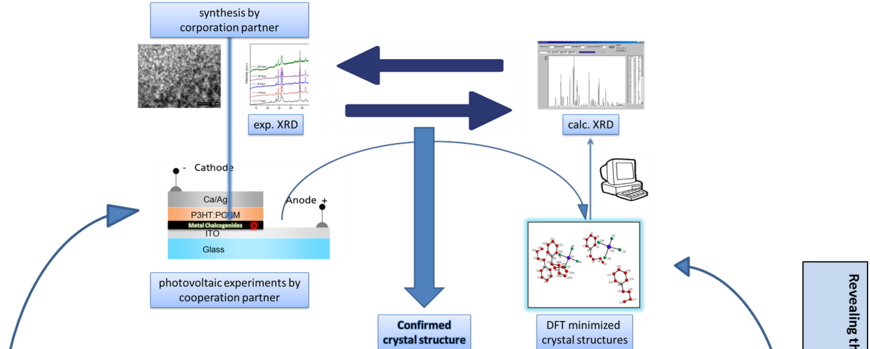Multicomponent Inorganic Nanomaterials for Dye Sensitized Solar Cells
The increasing world energy demand can only be met by harnessing energy from all sources available. According to projections, solar energy has the potential to provide a third of the peak global energy demand. While conventional silicon-based technologies currently rule the solar energy market, dye sensitized solar cells (DSSCs) are a highly promising future technology. The biggest advantages of DSSCs are the low costs and the energy consumption of the manufacturing process and the high efficiency under non-perfect light conditions, that is, indoors and/or under artificial light.
In dye sensitized solar cells, an efficient charge extraction requires a positive and negative contact material which should exhibit low resistive losses to increase the efficiency of the cell. Metal chalcogenides nanoparticles (p-type semiconductor) can be used as a single hole collection layer in DSSCs. Compared to alternative materials, metal chalcogenides help to reduce the barriers for charge carrier extraction and injection, to balance the charge mobility and, thus, to lower the resistive loss and to yield an improved fill factor. The goal of this project, which is carried out together with experimental collaborators from inorganic chemistry and the Fraunhofer Institute for Applied Polymer Research, is to find novel, complex metal chalcogenide nanoparticles synthesized from ionic liquid precursors, tailored for the application in dye-sensitized solar cells.
The role of theory in this collaborative effort is threefold. First, we employ DFT calculations to support the structure prediction and analysis of the synthesized metal chalcogenides. In particular, we use genetic algorithms combined with DFT-based geometry optimization and energy prediction to find crystal structures, which are then analyzed and compared to experiment via XRD pattern simulation. In a second step, we employ electronic band-structure calculations using DFT and GW methods to analyze the electronic properties of these novel materials. Finally, the optical properties of the nanoparticles are studied using TD-DFT and the Bethe-Salpeter Equation (BSE).
Funding: DFG Priority Program (SPP 1708) - Project KO4876/1-2: "Ionic Liquid Precursors for Multicomponent Inorganic Nanomaterials"
Project Members:Alkit Beqiraj

